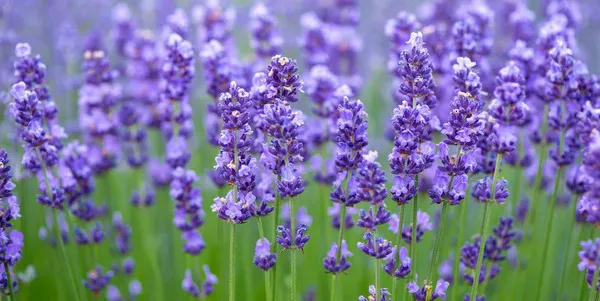As the warmer months approach, gardeners eagerly prepare to indulge in their passion for nurturing plants and cultivating vibrant outdoor spaces. However, along with the joys of gardening come the challenges of dealing with pesky insects that can wreak havoc on beloved plants. While chemical solutions are readily available, many gardeners are turning to natural methods to keep bugs at bay. One effective approach is strategically planting insect-repellent flowers in your garden. Not only do these blooms add beauty and fragrance to your outdoor oasis, but they also serve as a natural deterrent to unwanted pests. In this article, we will explore a variety of flowers known for their bug-repelling properties and how to incorporate them into your garden landscape.
Understanding the Benefits of Bug-Repellent Flowers
Before delving into specific flower choices, it’s important to understand why certain blooms are effective at repelling insects. Many plants have developed natural defense mechanisms to deter pests, often in the form of aromatic compounds or toxins present in their foliage and flowers. By strategically planting these bug-repellent flowers, gardeners can create a hostile environment for insects while simultaneously enhancing the beauty and biodiversity of their gardens.
One of the primary advantages of using bug-repellent flowers is their eco-friendly nature. Unlike chemical insecticides, which can harm beneficial insects and pose risks to human health and the environment, natural repellents offer a safer alternative. Additionally, cultivating a garden filled with bug-repellent flowers can help reduce the need for synthetic pesticides, promoting a more sustainable approach to gardening.
Top Bug-Repellent Flowers for Your Garden
1. Marigolds (Tagetes spp.): Marigolds are a popular choice among gardeners for their cheerful blooms and powerful insect-repelling properties. These vibrant flowers emit a scent that deters a wide range of pests, including aphids, mosquitoes, and nematodes. Planting marigolds around the perimeter of your garden or interspersing them among susceptible plants can help protect against insect damage.
2. Lavender (Lavandula spp.): prized for its fragrant blossoms and soothing aroma, lavender is also valued for its ability to repel mosquitoes, flies, and moths. This versatile herb thrives in sunny, well-drained locations and can be used in various ways, from border plantings to container gardens. Consider adding lavender to your garden to enjoy its beauty while naturally deterring pests.
3. Chrysanthemums (Chrysanthemum spp.): Chrysanthemums, often referred to as mums, are renowned for their stunning blooms and potent insect-repelling properties. These flowers contain pyrethrin, a natural insecticide commonly used in commercial pest control products. Planting chrysanthemums in your garden can help ward off ants, roaches, ticks, and fleas, making them an invaluable addition to your pest management strategy.
4. Geraniums (Pelargonium spp.): Geraniums are beloved for their colorful flowers and resilience in various growing conditions. Beyond their aesthetic appeal, certain species of geraniums, such as citronella geraniums, possess insect-repelling qualities. These fragrant plants emit a scent similar to citronella, which helps deter mosquitoes and other flying insects. Incorporating geraniums into hanging baskets or border plantings can provide both beauty and bug protection.
5. Rosemary (Rosmarinus officinalis): Known for its culinary uses and aromatic foliage, rosemary is also valued for its ability to repel insects. This evergreen herb emits a fragrance that mosquitoes find unpleasant, making it an excellent choice for natural pest control. Consider planting rosemary near outdoor seating areas or entryways to help create a bug-free environment while enjoying its culinary benefits.
6. Catnip (Nepeta cataria): While catnip may be a favorite treat for feline friends, it’s decidedly less appealing to insects such as mosquitoes, ants, and cockroaches. This member of the mint family contains a compound called nepetalactone, which acts as a natural insect repellent. Planting catnip in your garden can help deter pests while providing enrichment for your furry companions.
7. Nasturtiums (Tropaeolum majus): Nasturtiums are not only prized for their vibrant flowers and edible leaves but also valued for their ability to repel pests such as aphids, whiteflies, and squash bugs. These easy-to-grow annuals thrive in sunny locations and poor soil, making them an excellent choice for both ornamental and functional garden plantings.
8. Basil (Ocimum basilicum): prized for its culinary versatility and aromatic foliage, basil also possesses insect-repelling properties. The strong scent of basil plants can help deter mosquitoes, flies, and other flying insects when grown in pots or garden beds. Incorporating basil into your garden not only enhances your culinary pursuits but also contributes to natural pest control efforts.
Tips for Incorporating Bug-Repellent Flowers into Your Garden Design
Companion Planting: Integrate bug-repellent flowers throughout your garden beds, incorporating them alongside susceptible plants to provide natural protection.
1. Container Gardens: Plant bug-repellent flowers in containers placed strategically around outdoor seating areas to create a bug-free zone for relaxation and enjoyment.
2. Herb Gardens: Create a dedicated herb garden featuring insect-repelling herbs such as rosemary, basil, and lavender, providing both culinary and pest control benefits.
3. Vertical Gardening: Utilize trellises and vertical structures to grow climbing varieties of bug-repellent flowers, maximizing space while enhancing aesthetics and insect protection.
4. Successional Planting: Plan for continuous bloom throughout the growing season by staggering plantings of bug-repellent flowers, ensuring ongoing pest control benefits.
Conclusion
Incorporating bug-repellent flowers into your garden design offers a natural and effective approach to pest management while enhancing the beauty and diversity of your outdoor space. By selecting a variety of insect-repelling blooms and strategically placing them throughout your garden, you can create a haven that is both visually stunning and inhospitable to pests. Whether you’re a seasoned gardener or just beginning your horticultural journey, cultivating a garden filled with bug-repellent flowers is sure to yield a bountiful harvest of beauty and tranquility.


